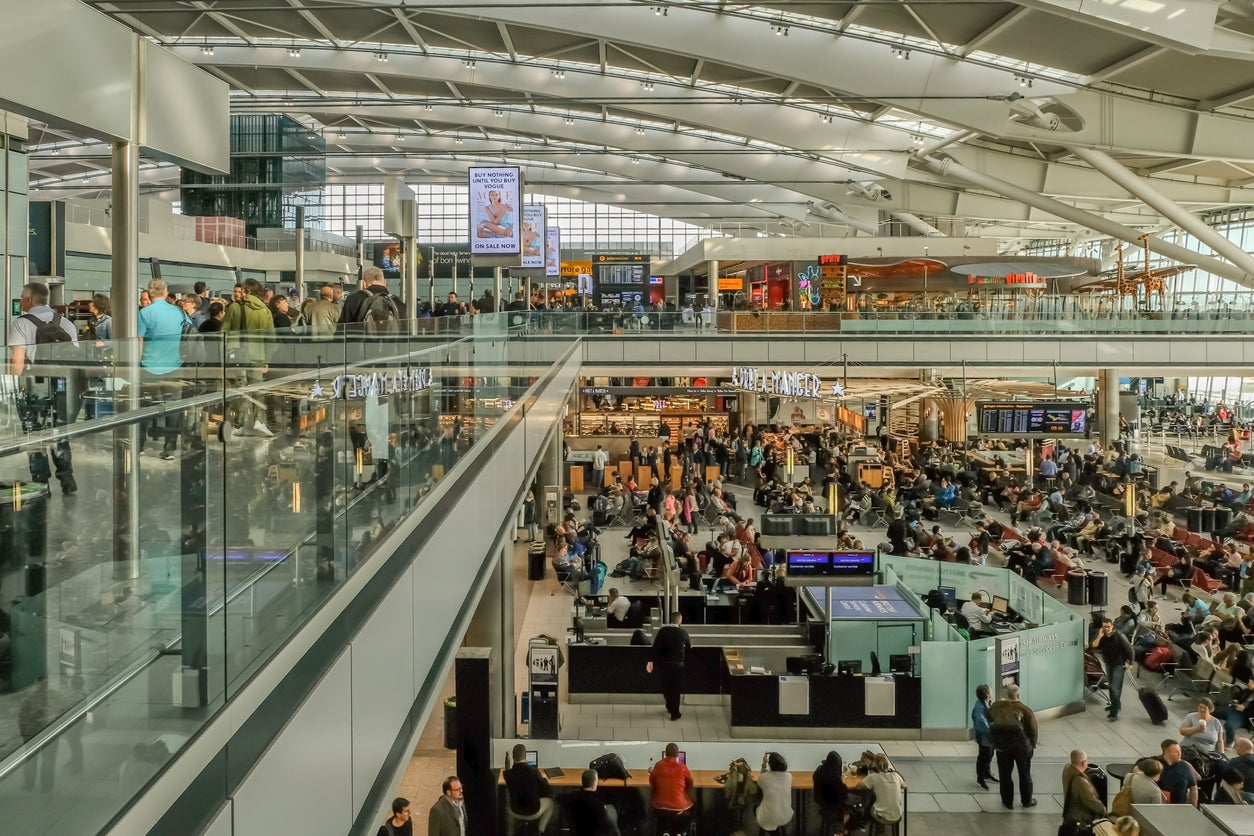Heathrow Airport is the big winner from flight tax cut
Exclusive: Most beneficiaries of the reduction in Air Passenger Duty will be flying to or from London

When the chancellor announced that Air Passenger Duty (APD) will be halved for domestic flights, he described it as “a boost to regional airports like Aberdeen, Belfast, Inverness and Southampton”.
In fact, the main beneficiary will be the UK’s biggest airport, Heathrow.
In the Budget, the chancellor announced that APD on domestic flights will halve from £13 to £6.50 from 2023.
The Independent has analysed Civil Aviation Authority figures for passenger numbers on domestic links in 2019, before the coronavirus pandemic.
London Heathrow is at one end of five of them, including four of the top five: to Edinburgh, Glasgow, Aberdeen and Belfast City. The fifth is Heathrow-Manchester, in 10th place.
London Gatwick and Edinburgh, Scotland’s largest airport, are the next most popular – with three appearances each in the top 10.
The link between them is third, with Gatwick’s connections with Glasgow and Belfast International third and eighth respectively. Edinburgh ranks first for its Heathrow connection, with a Stansted link seventh.
The shortest route in the top 10 is Heathrow-Manchester, at just 151 miles.
All 10 links serve London airports, as does the 11th, between London City and Edinburgh. All of them recorded more than half-a-million passengers in 2019 – while no region-to-region link did so.
Between them, flights starting or ending in London accounted for 55 per cent of the total domestic passengers in 2019.
The highest placed region-to-region links serve Belfast International, with the Liverpool link 12th and Manchester’s connection 13th.
The tax cut will reduce a typical domestic air fare by 10 per cent, The Independent calculates.
Rishi Sunak has defended the cut in APD by saying the tax cut would be “largely offset” by the introduction of a new ultra-long-haul tax band.
The extra £4 in APD for flights of 5,500 miles or more increases the average fare by around 0.5 per cent.
The government’s own figures show that the overall tax take from passengers is expected to decline by £35m in the first full year as a result of the chancellor’s cuts.
The Independent has asked the Department for Transport (DfT) for a response.
Join our commenting forum
Join thought-provoking conversations, follow other Independent readers and see their replies
Comments
Bookmark popover
Removed from bookmarks